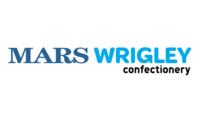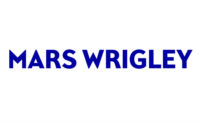Wrigley and Mars Chocolate have a vision for the future of impulse purchases.
With the retail landscape changing and people making purchases in more places than ever before, it's important for retailers and manufacturers to find ways to better meet shoppers' needs, whether it's at the front end, in the pharmacy, or online.
And Wrigley and Mars Chocolate have new insight into exactly that. By bringing decades of impulse leadership and global shopper insights to partner with retailers, they hope to implement new merchandising recommendations, improve shopping experiences, and drive growth.
“It’s no secret that people don’t shop like they used to, and the traditional mix of impulse items in transaction zones needs to better meet consumer needs,” says Kurt Laufer, v.p. of U.S. sales, Wrigley. “By tapping into our deep understanding of the shopper and taking a hard look at what items are performing and why, we believe our strategies can help our retail partners capture valuable impulse sales.”
Companies are increasingly looking at where shoppers purchase goods and services — in other words, transaction zones.
While the front end is still the largest impulse purchase area, shoppers are also checking out in other transaction zones. The pharmacy, cafe, shopping via mobile phones and using "buy online, pickup in-store" models are all growing in popularity.
Optimizing merchandising recommendations must include new variables that are "transaction zone agnostic," meaning they can apply not only to the front end but to all others as well. Those include macro trends like the increase in snacking, size and growth of the category, and new research.
As part of their new vision, Wrigley and Mars Chocolate have conducted extensive global research to understand the emotional journey people make while shopping. The conclusion: Checkout is the emotional low point in the shopping journey. But retailers can help overcome this low point and capture more impulse purchases by merchandising to satisfy three key mindsets:
Refresh: Shopping can be stressful and tiring, so shoppers look to refresh or recharge themselves once the job is done. Items fulfilling the “refresh need state”, like gum, mints, beverages and snacks, should occupy 51 percent of total space.
Reward: Shoppers often seek a treat or reward, like chocolate and non-chocolate candy, after the “chore” of shopping. Items fulfilling the “reward need state” should occupy 39 percent of total space.
Remind: It is helpful for shoppers to find items they forgot to add to their lists, like batteries and lip balm, in the transaction zone. Items fulfilling the “remind need” should occupy about 10 percent of total space.
“We’ve found that satisfying these three distinct shopper mindsets is key to promoting conversion for categories like chocolate, gum, mints and candy,” says Tim LeBel, v.p. of sales, Mars Chocolate North America. “Mars Chocolate and Wrigley are working with retailers across channels to ensure current and future check out choices satisfy their shoppers’ needs during checkout and drive impulse purchases.”










